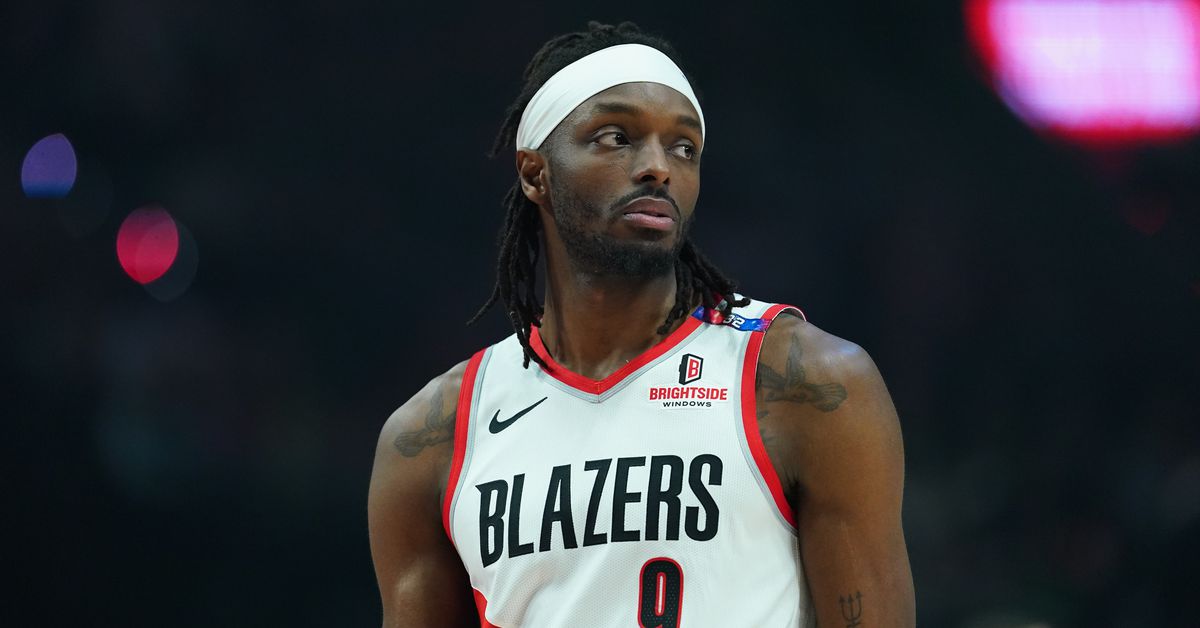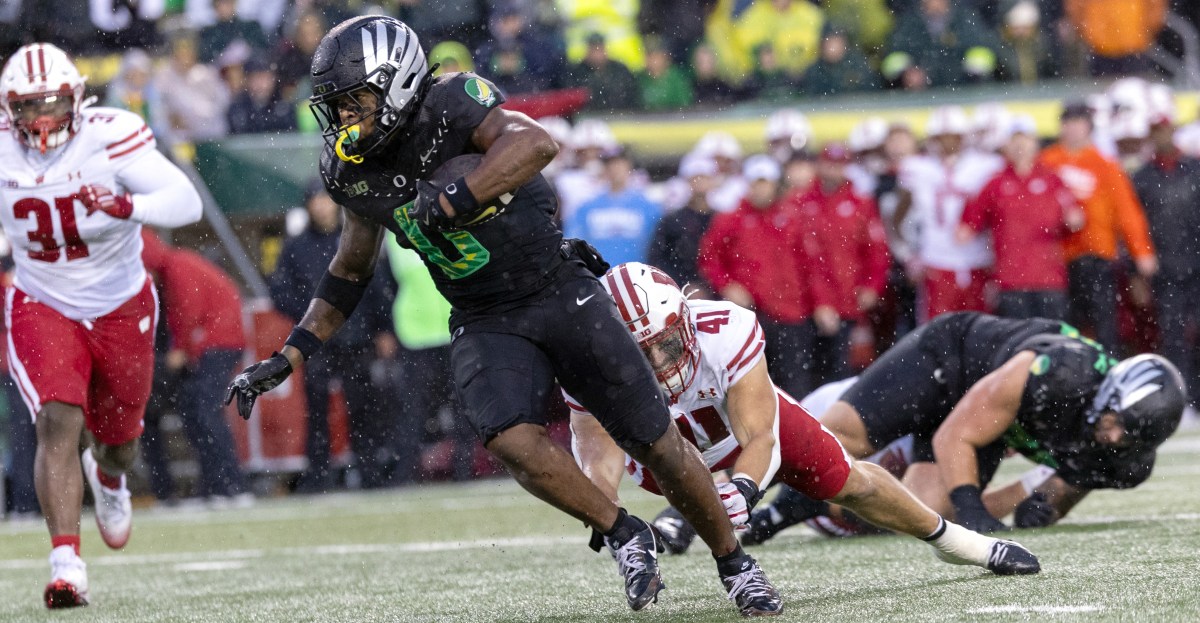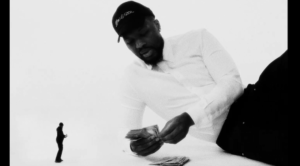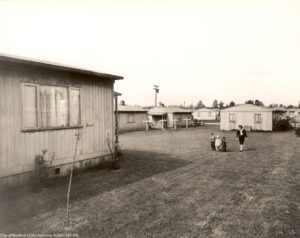Blazers’ Jerami Grant Goes from Stopper to Doorstop in One Season
The Portland Trail Blazers are done with the 2024-25 season, but the aftermath will continue on through the summer months of 2025. Between the end of the regular campaign and the ramp up to the 2025 NBA Draft, we’re taking a look at Portland’s roster, examining all the significant players, their performances over the course of the year, and what the future might hold.
So far we’ve looked at Scoot Henderson, Shaedon Sharpe, and Donovan Clingan. Today we’re parsing the season of the most veteran Blazer, forward Jerami Grant.
Grant was in an unusual situation this year, the only member of the roster whose age started with a “3” instead of a 2 or 1. At the start of the season, it looked like the team would rely on him as a tentpole starter, perhaps the de facto leader. It didn’t quite turn out that way. Let’s take a look.
The Good
The old adage, “If you can’t say anything nice, don’t say anything at all,” might apply here. Jerami Grant was nowhere near his own standard in any category in 2024-25.
It’s a reach, but Grant’s turnovers per minute and possession went down this season? We’ll explain why, at least in part, in the analysis section, but at least that’s one stat going the right direction for him.
He also has a really shiny 85% free throw shooting percentage.
There. We did it.
The Bad
Hoo boy, we have a smorgasbord to choose from here.
Let’s start with 47 out of 82 games played. That’s the lowest total for Grant since 2021-22, his last season with the Detroit Pistons before coming to Portland. That year was filled with injuries and discontent from the then-27-year-old forward. That story repeated this year.
Grant logged just 1524 minutes this season. That sits as part of a trio of career-lows since his rookie year in the NBA. After each of the other two lows, he was traded.
At least Grant was producing at some kind of measurable level in that final year in Detroit. He didn’t this year at all. His scoring averaged dropped from 21.0 to 14.4. His overall field goal percentage went from 45.1% to 37.3%, including an absolutely miserable 38.1% conversion rate on two-point shots.
The three-point picture wasn’t much better. Shooting 36.5% puts Grant among the better Trail Blazers; they don’t fare well as a group beyond the arc. But it’s way below the 40% clip we’re used to seeing from him. Worse, he took 51.6% of his attempts from distance this year, a massive career high. That’s a bad time to lose 40 points off of your shooting percentage.
Unsurprisingly, his rate of drawing free throws also plummeted, taking away even more points from his scoring average.
Though he was once known for defense, Grant’s defensive rating ranked 13th-lowest on the team this year. Among regular rotation players, only Anfernee Simons was worse.
The Blazers were 6.3 points per 100 possessions worse with Grant on the floor than they were without him. Again, only one regular rotation player—Deandre Ayton—ended up worse.
Whatever the Blazers expected of Grant, it wasn’t this. His season was the equivalent of watching a TikTok where a guy rides a bike near the edge of a cliff, falls off, cartwheels 16 times, and ends up in a patch of cactus. Planted in a dumpster. Being hit by a radioactive meteor. While playing “MacArthur Park” in the background.
The Analysis
Given the number of games played, I’m betting that before the summer is over, we’re going to hear the narrative that Grant’s injuries were worse than he or the team let on during the year. That would go a long way towards explaining his plunge at the comparatively young age of 30.
One other factor likely played a huge role. At the start of the season, Grant looked fairly normal. At that point, he was still the main option—or at least a main option—in Portland’s offense. As the season progressed, touches for Deni Avdija, Anfernee Simons, and Scoot Henderson predominated. Grant started slipping further away from the center of scoring, also further from the center of the court. By year’s end, he was a glorified sideline catch-and-shooter, a far cry from the buffet of isolation looks he had received earlier as a main cog.
This not only explains Grant’s lapse in scoring (and, ironically, those better turnover numbers, because you can’t turn over a ball you don’t touch), it might explain why it was harder for him to get into games overall. At times in his career, Grant has been a holy terror on the court, hounding opponents on defense and flying to the rim on offense. He looked more like a meatloaf-filled beagle by the end of the season. He just wasn’t moving with speed or energy. Being marginalized may have something to do with that.
What’s Next
How much of Grant’s decline was injury-related/physical and how much environmental/mental will go a long way towards resolving his next steps.
To the extent we blame the former, rest and recuperation is the way to go. The Blazers will likely push this angle as the new season approaches.
If Grant’s issues are environmental, however, we might have a problem. Avdija and Toumani Camara aren’t going anywhere. The Blazers aren’t looking to get less touches for their point guards either. In fact they’re trying to develop that position. That’s going to make Jerami the third guy to touch the ball on many possessions, not the first or second. How he responds to that, especially in the non-scoring aspects of the game, will determine his ongoing value.
Grant has three years remaining on his current deal at $32 million, $34 million, and a player option for $36 million. Unless his production revives, the Blazers will have a hard time trading him at that level of compensation. If he starts shooting 40% from the arc and plays defense hard again, he’s got value around the league. A guy who shoots worse from two-point range now than he did from three-point range over the last couple seasons just doesn’t have a lot of attraction.
So what’s next for Jerami? Rest, heal, get right with your own brain and Jesus, then come out ready to play next fall. If that happens, this year will probably be forgotten or chalked up as an aberration. If it doesn’t. nothing else is going to matter.
Share this content:














Post Comment